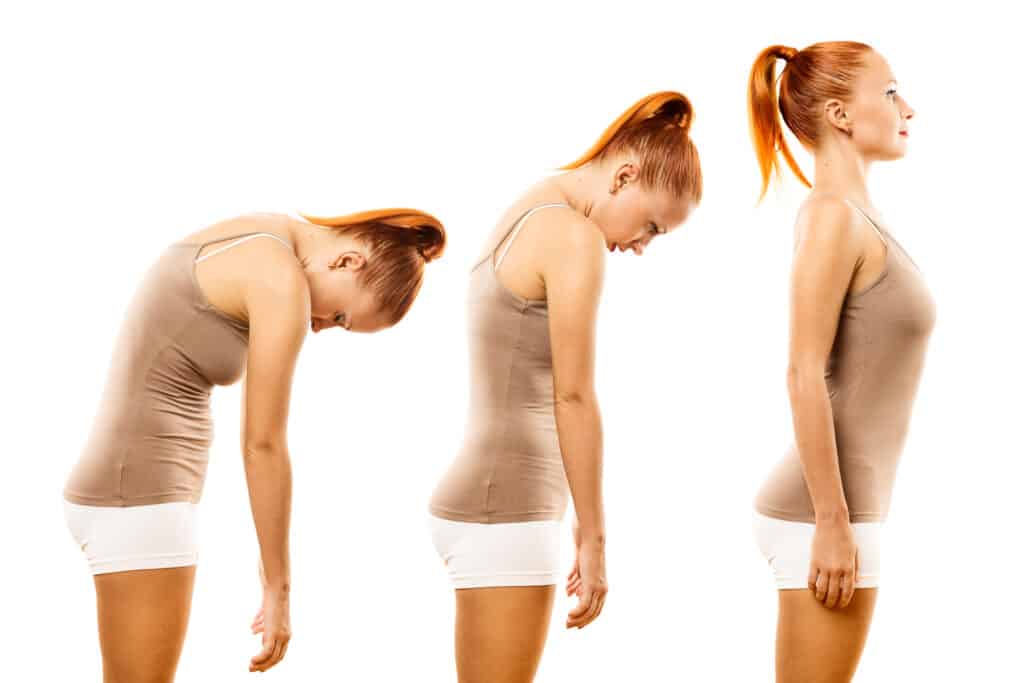An estimated 20 percent of Americans (50 million adults) are dealing with chronic pain. This is according to statistics from the Centers of Disease Control & Prevention. Chronic pain leads to an estimated $560 billion yearly in terms of direct medical costs and lost productivity.
There is a great deal of information available regarding how to manage chronic pain. Usually it’s a combination of modalities that seem to work best for managing pain.
Chronic Pain: How Best to Manage it?
Thinking Beyond Ice and Heat Application
When someone usually gets injured, they typically try NSAID’s or use ice or heat as an initial treatment. Each one is adequate in terms of a short-term treatment, but when the issue becomes more chronic (i.e. lasting more than 12-weeks), then mindset needs to shift. The following therapies below are viable options to look more into and see if one or more may be an avenue for you to explore.
Get a Postural Assessment or Movement Screening
A prudent first step for dealing with chronic pain is to first get a recommendation or referral from your physician. They may suggest x-rays or an MRI. Following this, some form of postural assessment or movement screening may be warranted. Check to see how your body looks and feels while in a standing posture, and walking, and while performing various movements and tasks? Some of the therapies mentioned below typically offer a screening or assessment as part of their practice.
A postural assessment can help pinpoint where any issue are on your body. Is it a structural or muscular issue? Are there muscle imbalances or differences with left and right sides of the body? Are there other dysfunctional problems that need to be addressed? These can be some of the learned outcomes. There is also a movement competency screening that can be done. This test may look at performing a squat, lunge, push up, bent-over pull and single-leg squat as one example.
1. Therapeutic Massage
Regular, full body massage is very helpful in terms of restoring “balance” to the body. Therapeutic massage can help release any tight, restrictive, connective tissue and or muscle. A session is typically 60 or 90-minutes. The cost will vary depending on session length and type of massage (i.e. therapeutic or deep tissue).
2. Chiropractic Care
Like with any type of clinician, there are some chiropractors you would recommend and others you may not. Ask your healthcare provider for a referral before trying someone. Going chiroprator to get only “adjustments” may help in the short-term but most likely will not aid chronic issues. This is because there is usually an underlying issue that has not been addressed. This could be a simple weakness or muscle imbalance, or possibly a structural issue, etc. Getting massage, chiropractic adjustments or doing yoga, etc. are all great. Keep in mid that they may not get you better though. You need to find out what’s causing the chronic pain is and work on correcting the issue(s).
3. Physical Therapy Sessions
Physical therapy sessions (PT) are usually the first option for many, especially if someone is going through their healthcare provider. You can make great progress with PT sessions but after about 6-12 appointments, your usually on your own. Some of the benefits of PT include:
- Reduce or Eliminate Pain
- Improves Mobility
- Recover from or Prevent Sports Injuries
- Improve Balance
- Manage Age-Related Issues
- Recover from or Manage Heart and Lung Disease
4. Egoscue Method
This is a corrective form of therapy you may not have heard of. The company was founded in 1971 Pete Egoscue, an anatomical physiologist. The Egoscue Method is a form of postural therapy used to eliminate chronic pain and increase functional mobility. Part of the first session includes a postural assessment that involves technology to assess any anatomical posture issues. Egoscue involves a series of daily sessions to allow the spine, hips, or shoulders, etc. to get back into proper alignment using gravity and bodyweight exercises known as e-cises. Egoscue has an app that your therapist will load e-cises onto for you so you can follow along until you put it to memory.
There is also an updated book available, Pain Free (2021), by Mr. Egoscue which I just re-read and is very good.
5. Rolfing (aka Structural Integration)
This method is usually a last resort for many people according to a rolfing practitioner who I recently worked with. Structural integration, also known as rolfing, uses a combination of myofascial release and hands-on bone and joint manipulation. The goal is “bring the body closer to its center line of gravity so fewer muscles are required for basic standing and sitting.” Rolfers consider five basic points when putting together a plan for a client. They believe proper body alignment occurs when these five landmarks line up: the ear, shoulder, hip, knee and ankle. Imagine a weighted string hanging down from the bottom of the ear to the ankle (see photo above).
A series of ten, one-and-half hour, sessions are required to complete a rolfing series. So Rolfing® is a term specific to the Ida Rolf Institute while structural integration (SI) is a more descriptive and generic term. The goal of SI, is to “focus on systematic soft tissue mobilization and movement re-education, aimed at aligning the body within the gravitational field.” This therapy can be quite expensive and not covered by insurance. Like with anything else, find a good, qualified practitioner. For more information on this form of therapy, check out the Ida Rolf website.
Final Thoughts
There are no quick fixes when it comes to “fixing” the body. Sadly, over time, we’re all going to slowly breakdowns, due to a plethora of factors. These include, age, too much sitting, inactivity, and the big one, looking at a “screen” all day. By screens, I’m referring to, your phone, computer and TV. What do you think all that time spent looking at screens is doing to your cervical and thoracic spine? You get the picture. First, address the issues and complete an assessment or screening. Next, have a practitioner put together a personalized exercise prescription.
References
Deutsch, J. E., Derr, L. L., Judd, P., & Reuven, B. (2000). Treatment of chronic pain through the use of structural integration (Rolfing). Orthopaedic Physical Therapy Clinics of North America, 9(3), 411-425.
Institute of Medicine. Relieving pain in America: a blueprint for transforming prevention, care, education, and research. Washington, DC: National Academies Press; 2011.
Stay Strong Together with Jefit App
Jefit, named best strength app by Men’s Health, Greatest, Forbes Health, Men’s Journal and many others, has a community responsible for 92,000,000 workouts to date! The app, which recently passed 10 million downloads, comes equipped with a customizable workout planner and training log. The app has ability to track data, offer audio coaching cues, and can share workouts with friends. Take advantage of Jefit’s exercise database for your strength workouts. Visit our members-only Facebook group. Connect with like-minded people, share tips, and advice to help get closer to reaching your fitness goals. #staystrongtogether
- Top Hip & Back Extension Exercises for Posterior Chain Power - April 23, 2025
- Best Exercises to Build Strong & Defined Shoulder Muscles - April 21, 2025
- Whey vs. Casein: What’s the Best Protein for Building Muscle - April 18, 2025

